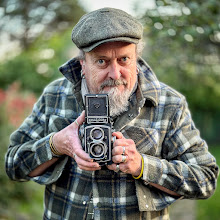 |
| iPhone 7 photo as shot, note bleached highlights and clogged out shadows. Click for a bigger view |
 |
| An edited shot, adjusting shadow and highlight detail, as well as rewriting the white balance. Click for a bigger view |

 |
| iPhone 7 photo as shot, note bleached highlights and clogged out shadows. Click for a bigger view |
 |
| An edited shot, adjusting shadow and highlight detail, as well as rewriting the white balance. Click for a bigger view |
Yesterday I dedicated time to sorting out the right hand side where trains exit stage. Disappearing roads in to a backscene are a problem, whist they can look ok to the eye, they rarely work in photographs. With the day job snapping model railways for the popular press, I encounter this frequently, so wished to avoid this with my own modelling which is more likely to be seen online than at shows (One or two shows for me a year are quite enough).
As a workaround, my bits and bobs box had a nice set of gates crying out to be used (I think there were off some long gone Bachmann ready to plonk buildings). So, with those in place, I wonder what is beyond those forbidding gates? Some Adams Family type lair? The local inbred gentry along the lines of Sir Henry at Rawlinson End? A top secret cult? RMweb? A government covert operations centre? I imagine we'll never know. I'm open to suggestions of course...
The warning signs are reused from old old layout that lost its crossing. They're scratch from some bits of plastic, a splash of paint and a computer printed sign.
The little pre war car is from a white metal Springside kit made many years ago. Austin 7s were tiny little cars, it looks under scale, but it is in fact quite right. In the UK, pre-war cars were still quite a feature right through to the 1960's, we did a lot more make do and mend in those days.